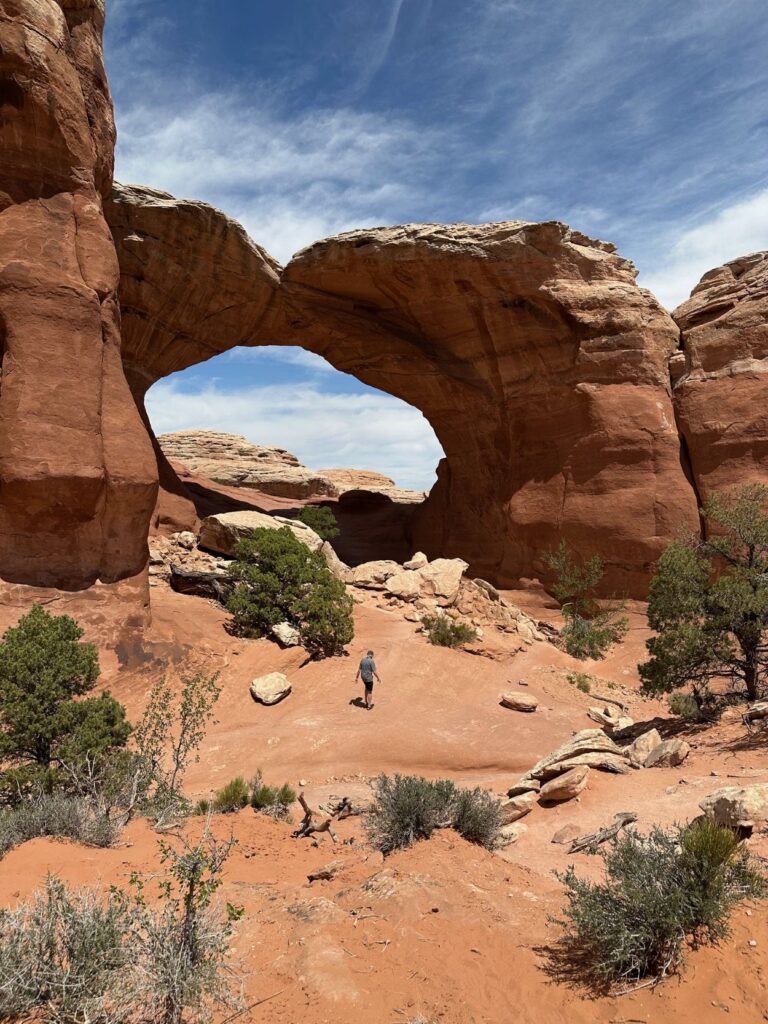Visiting the U.S. National Parks has been on the bucket list for a long time, so it’s fitting that our journey started during this year’s National Parks Week (April 19-27).
The National Park Service System includes 63 national parks as well as 433 monuments, historic sites, battlefields, recreation areas, trails and other types of protected areas. You’ll find at least one in every state as well as in the District of Columbia, American Samoa, Guam, Puerto Rico and the Virgin Islands. A record 331 million visitors explored the U.S. National Parks in 2024.
There are so many ways to make a national parks adventure your own: Hiking, biking, rafting, kayaking, trail riding, and just plain enjoying the views (to name a few). We chose to start our adventure in the American West, with stops in Utah’s Zion, Bryce Canyon, Canyonlands, Arches, and Capitol Reef National Parks, topped off with a visit to the Grand Canyon National Park in Arizona.
So far on our journey, we’ve hiked dry river beds flanked by towering red canyon walls, climbed rocky trails into fresh air laced with the scent of Ponderosa pines, raced alongside a river on an e-bike, watched as sunset transformed rugged orange rock into brilliant red cliffs, and felt small among a night sky blasted with stars.
And all I can think of is: Why didn’t we do this sooner? But, at least we’re on our way.
Follow our itinerary
Day 1: Las Vegas / Valley of Fire State Park (Nevada)
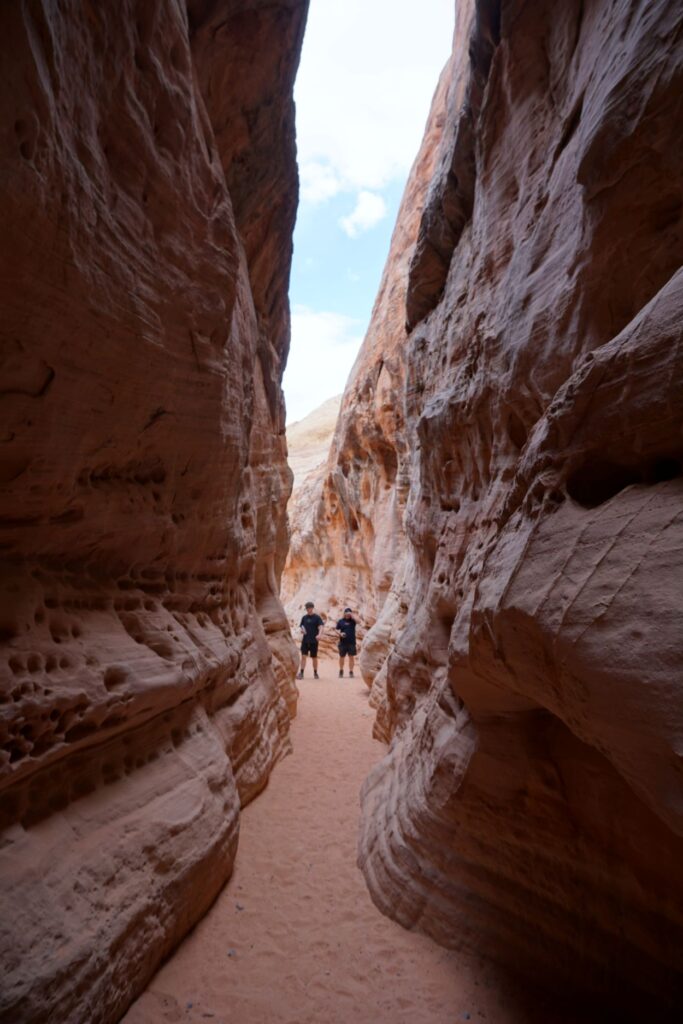
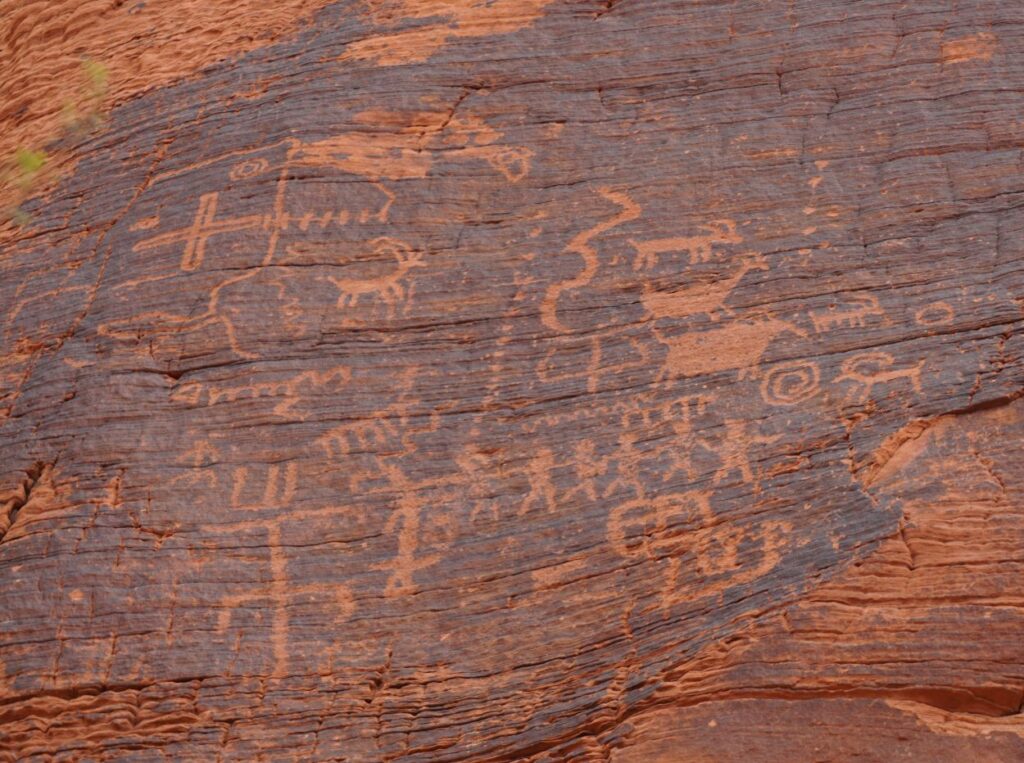
While not part of the National Park System, Valley of Fire State Park in Nevada is just 45 minutes outside of Las Vegas and is well worth the stop on the way to Zion NP. We saw red sandstone formations and petroglyphs left behind by the Basketmaker and Early Pueblo cultures more than 2,000 years ago. White Domes Loop is a fairly easy hike that circles a large rock structure and passes through a narrow slot canyon. Petroglyphs can be found on Mouse’s Tank trail. Other short hikes take in unique rock formations or historic sites in the park.
Days 2-3: Zion National Park (Utah)
Zion is the third-most-visited U.S. national park, and for good reason. The 147,000-acre park features interesting short day hikes as well as more challenging, multi-day backcountry experiences. One of the most popular (and challenging) trails is the Narrows, which involves wading through the Virgin River between steep cliffs. Waterproof gear can be rented from an outfitter at the park entrance. An easier alternative is the paved Riverwalk trail which stays on dry land and shares some of the same stunning views.
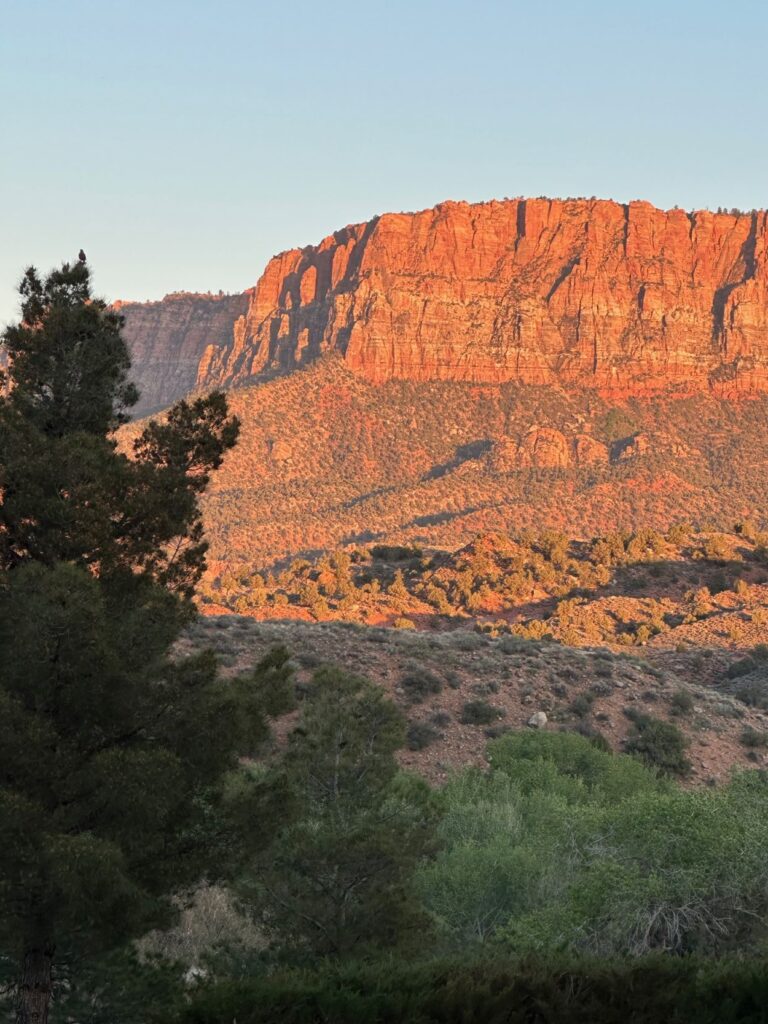
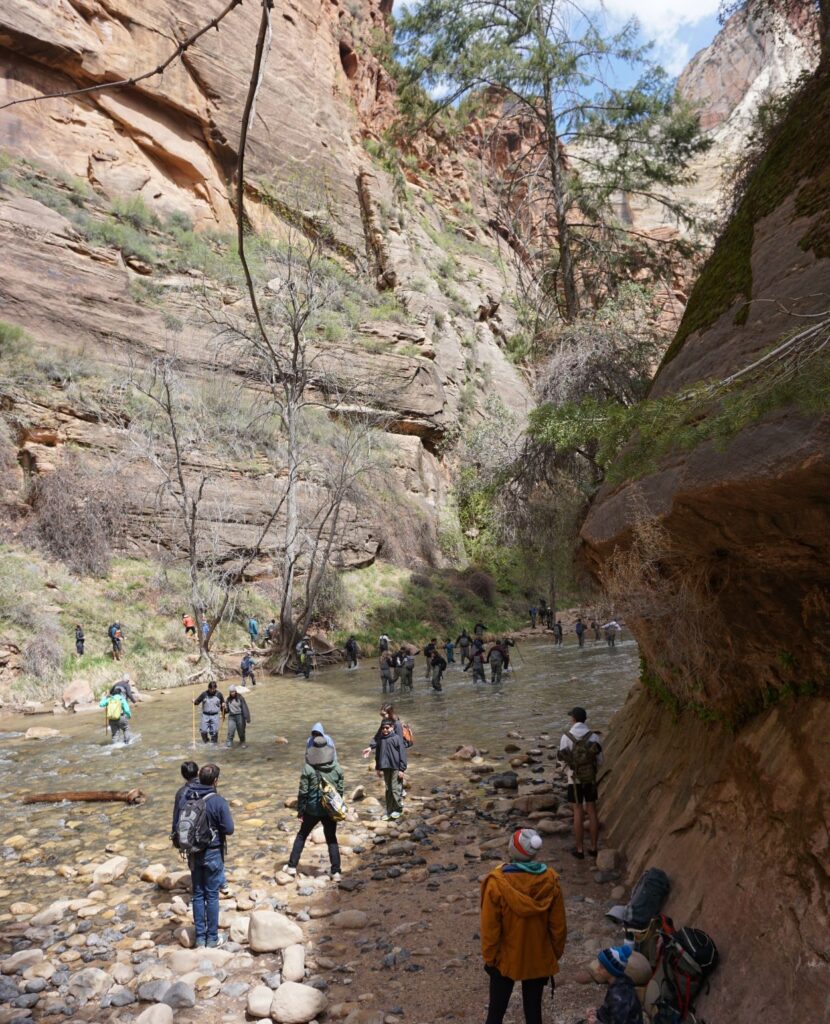
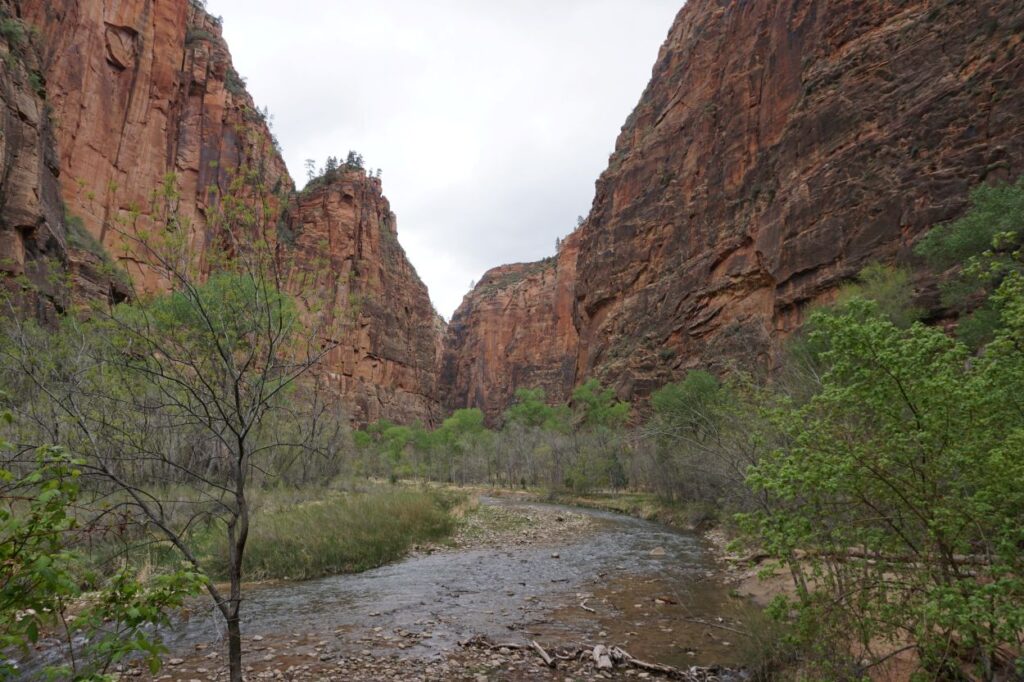
Zion has an efficient shuttle bus system that stops at trailheads, picnic areas and other scenic areas throughout the park during peak season. Private vehicles are not allowed on the main road inside the park, which makes it ideal for those who wish to ride bicycles through the canyon (rentals available at the park entrance). The shuttle system also connects to the hotels and resorts in nearby Springdale.
Day 4: Bryce Canyon National Park (Utah)
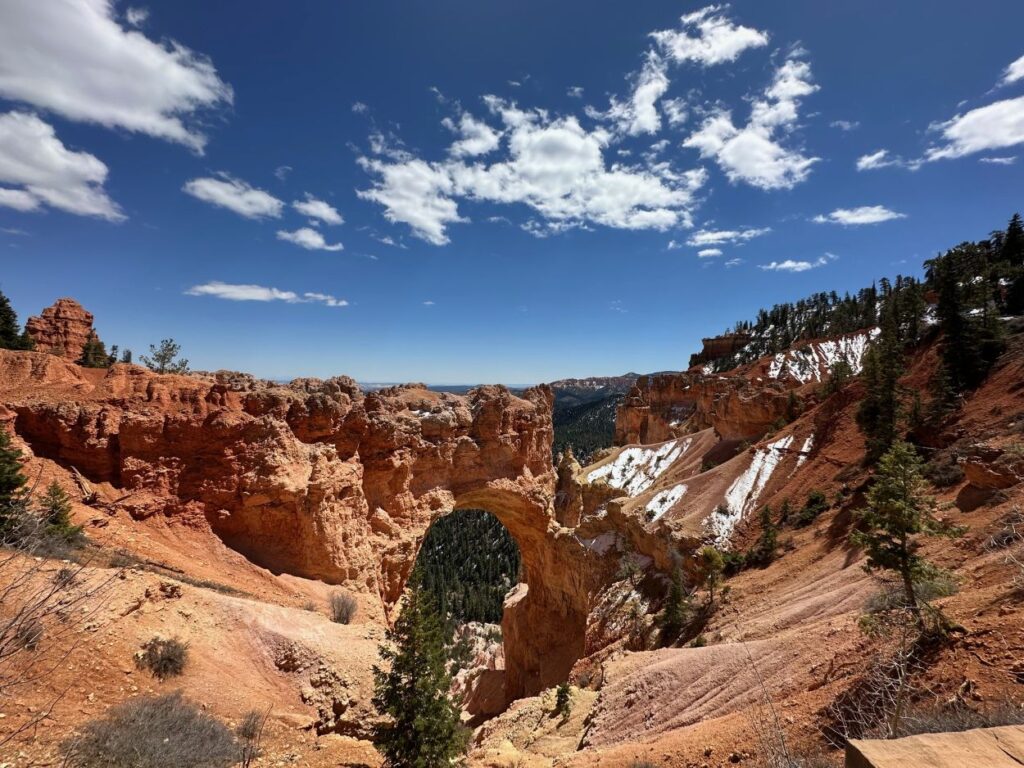
We stopped at Bryce Canyon National Park for a few hours on our way from Zion to Capitol Reef National Park. The main feature of the parks are the “hoodoos,” spectacular rock features cut into the Pink Cliffs. You can see them on the park’s 17-mile scenic drive, which includes numerous lookout points and trailheads.For those with more time to spend, there are several hikes of varying lengths and skill levels.
Days 5-6: Capitol Reef National Park and Goblin Valley State Park (Utah)
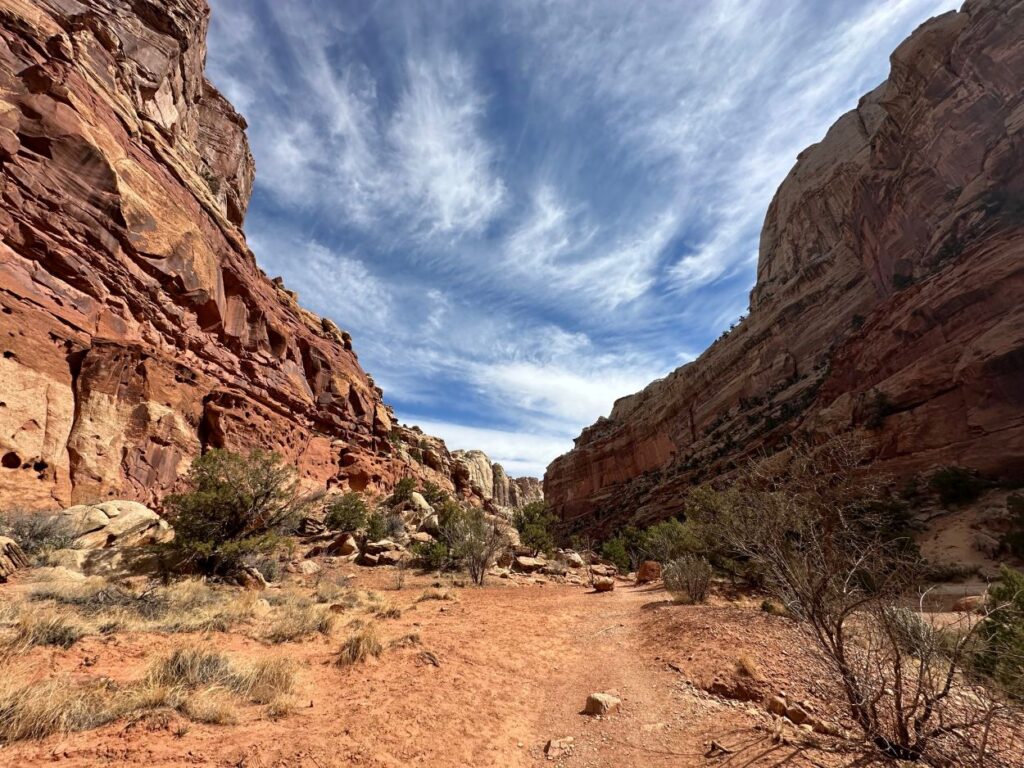
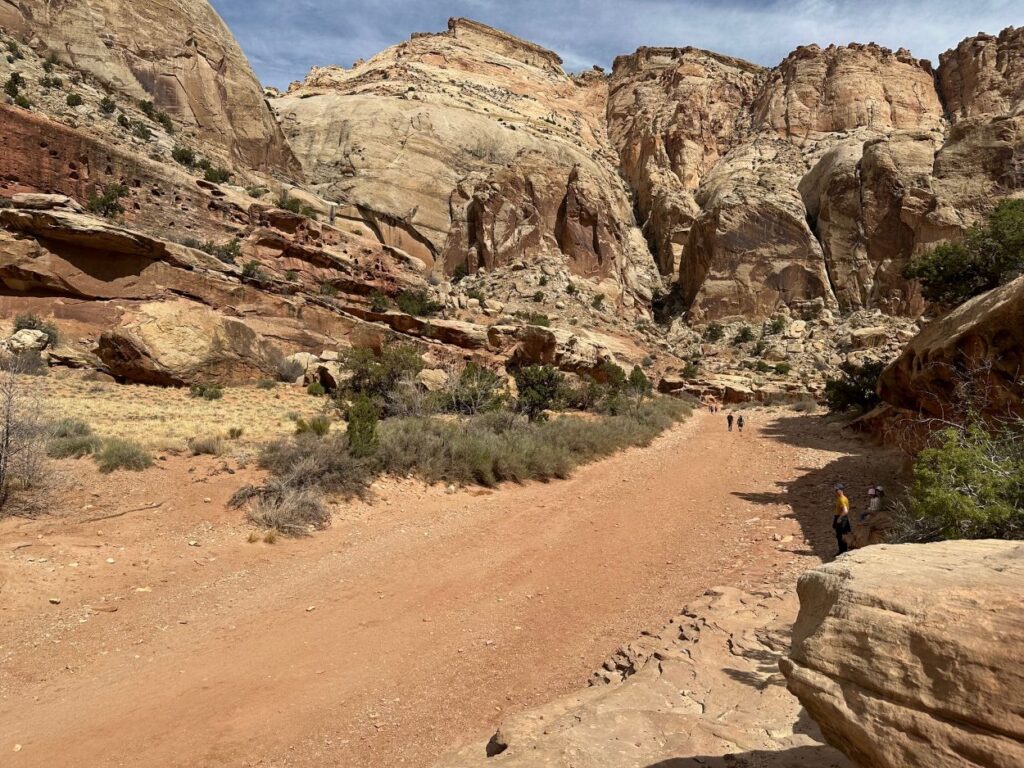
While Capitol Reef National Park is less well-known than some of the other national parks, it features impressive canyons, arches and sandstone formations. We opted for some scenic overlooks and the 4.4-mile roundtrip Grand Wash trail, which follows a dry riverbed flanked by impressive canyon walls.
The park also includes the orchards and restored structures in its historic Fruita District, a typical early 1900s rural farming community. The Gifford House serves up fruit pies using traditional recipes.
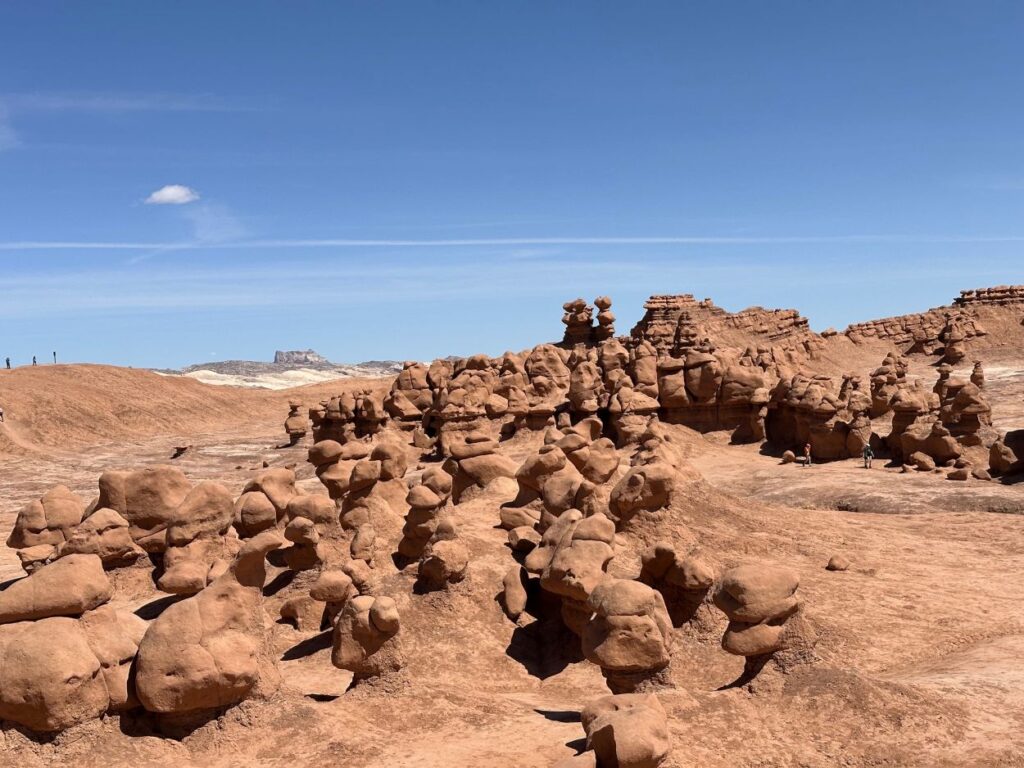
On our way to Moab, we also stopped at Goblin Valley State Park. The unusual rock formations have features that make some of them look like goblins, and the entire park makes you feel like you’re on another planet. A scene from the movie, Galaxy Quest, was filmed here.
Days 7-10: Arches and Canyonlands National Parks, plus Dead Horse Point State Park (Utah)
Moab, Utah is a great base for exploring Arches and Canyonlands National Parks, as well as the impressive Dead Horse Point State Park. Arches NP is home to more than 2,000 natural stone arches. A number of scenic outlooks and hikes showcase the most popular, including the iconic Delicate Arch featured on the Utah license place. We hiked the short trail to Sand Dune Arch, which had the bonus of a small slot canyon, then walked across the desert to Broken Arch. Entrance to the park is via a timed entry ticket, so advance planning is necessary.
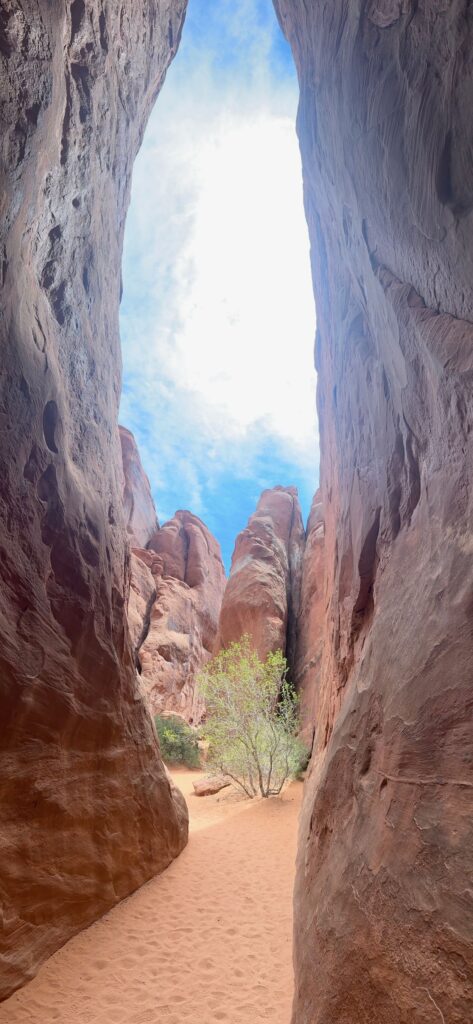
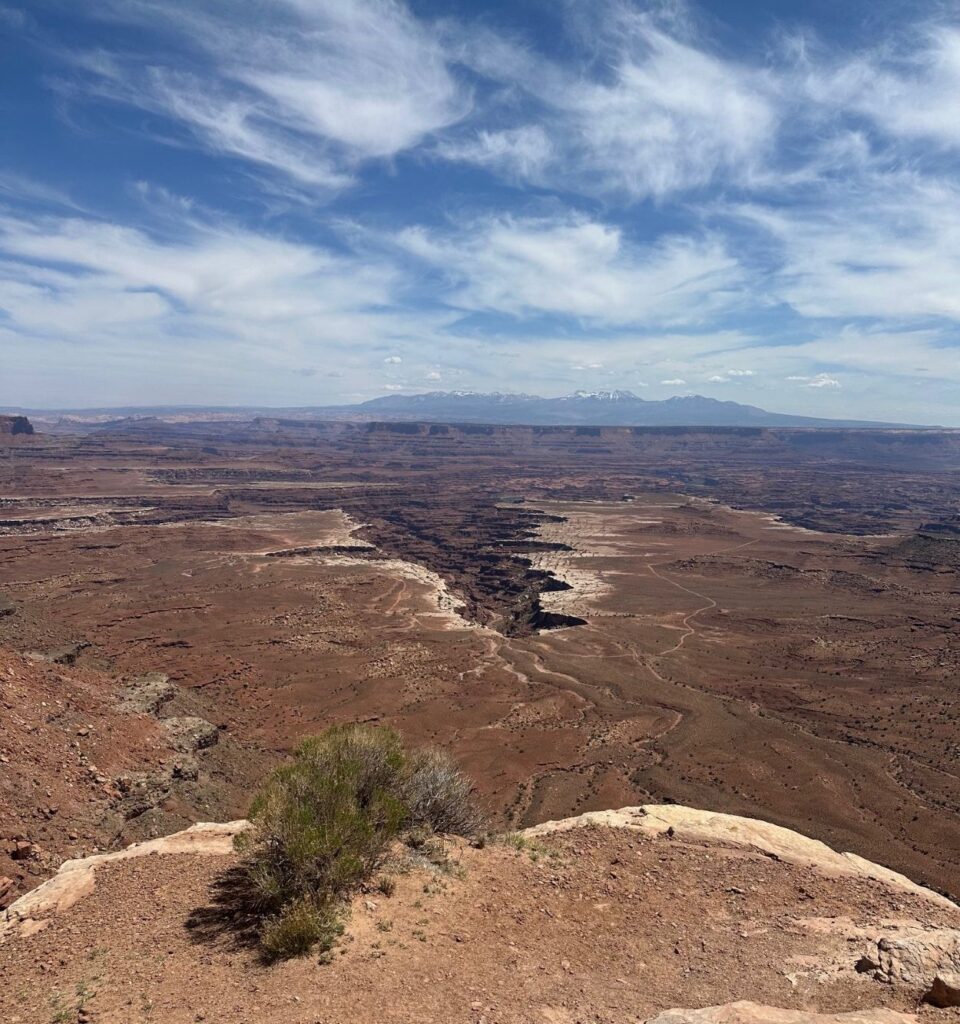
Canyonlands is a massive park that covers 527 square miles. It’s divided into four districts—Island in the Sky, Needles, the Maze and the Rivers. Most of the districts are remote, offering backcountry, multi-day experiences. The most visited is Island in the Sky, which is just a few miles from Arches and features breathtaking overlooks of the area where the Colorado and Green Rivers converge.
A short drive away is Dead Horse Point. While there are a number of easy to moderate hiking trails here, the highlight is the Dead Horse Point loop. It follows the rim with outstanding views of the Colorado River as it cuts its way through the canyon.
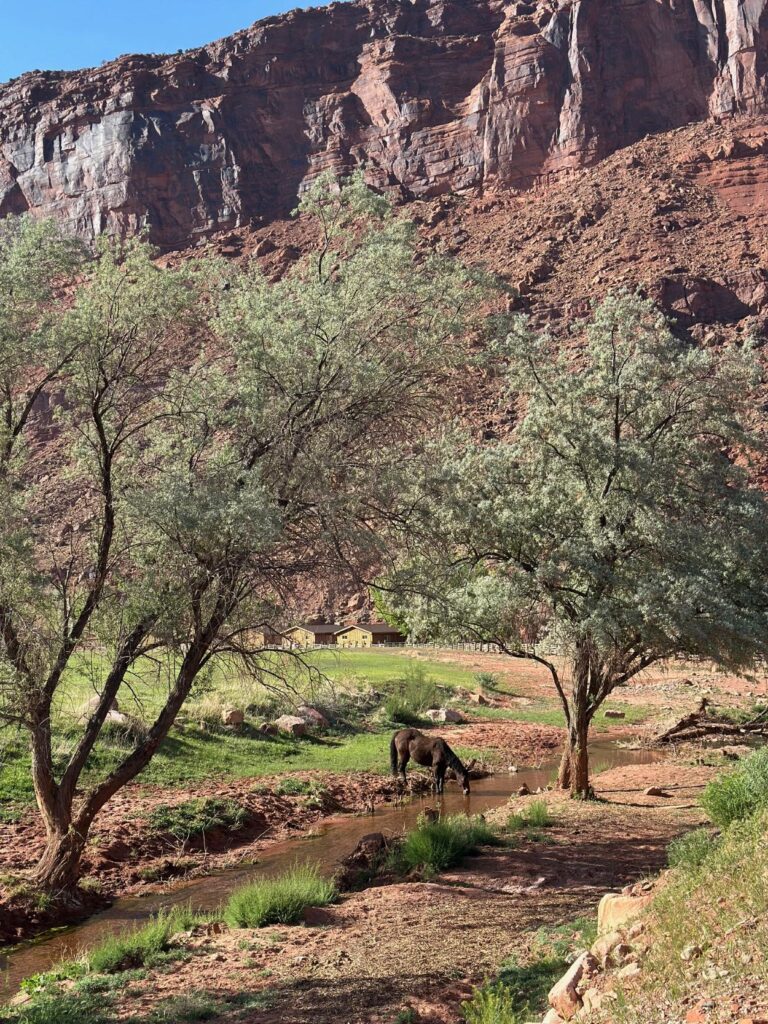
Moab is a paradise for outdoor enthusiasts, and one can find a number of opportunities from zip-lining to canyoneering to offroading. We connected with a local outfitter for a whitewater rafting adventure on the Colorado River. Trail rides around Moab are also available.
Day 11-12: Monument Valley and Grand Canyon National Park (Arizona)
It’s worth the stop on the way from Moab to the Grand Canyon to visit Monument Valley Navajo Tribal Park. While not part of the national park system, Monument Valley includes a series of impressive rock formations and monoliths. Be aware that the 17-mile road through the valley is rugged and best suited for high-clearance vehicles.
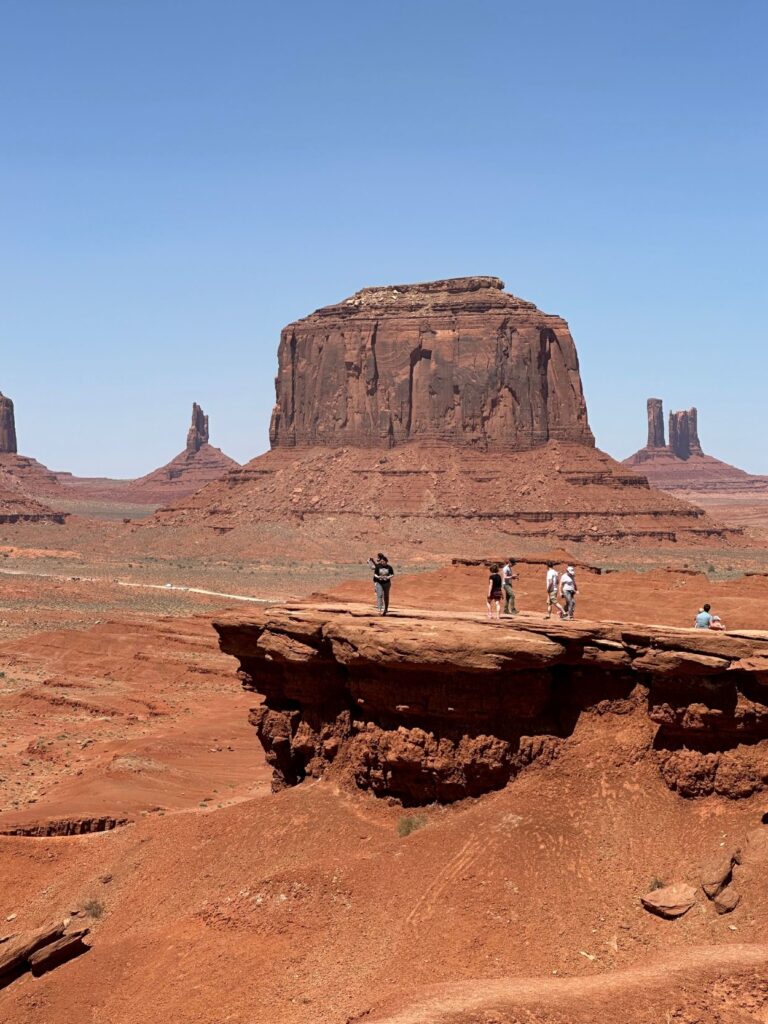
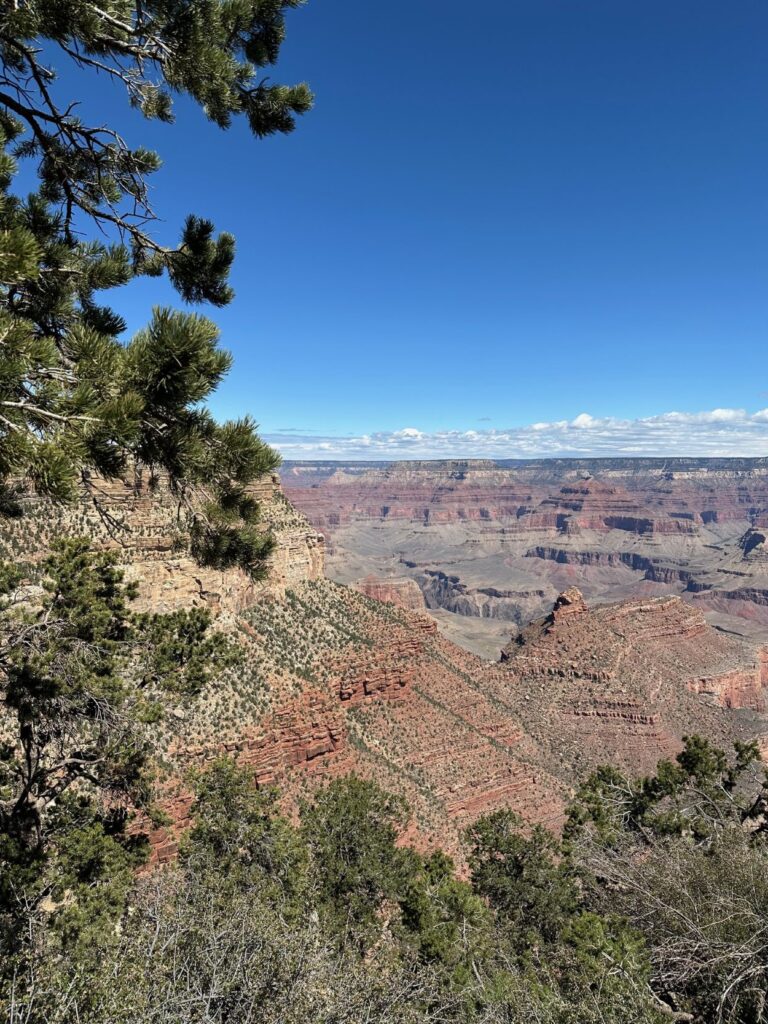
The sheer size and scale of the Grand Canyon made it the main attraction of this road trip. Most visitors walk at least part of the 13-mile long Rim Trail, which offers non-stop views of this mile-deep canyon. It’s easy and paved, with scenic lookouts that jut over the cliffs. A number of more strenuous hiking trails are offered that go below the rim into the canyon. Ranger-led programs including geology talks, dark sky stargazing and others provide further insight into this amazing park. Bike trails traverse the pine forests inside the park (rentals available near the Visitor Center).
General tips for visiting the parks
- Spring and fall are the best times to visit. Summer temperatures can easily fall in the 90- to 100-degree Fahrenheit range at the parks we visited.
- Download the National Park Service app on your phone. You’ll get up-to-date information about the trails, closures, events such as ranger talks, activities and more.
- Plan ahead. Lodging and campgrounds fill up fast in and around the parks, with some taking reservations a year in advance. At Arches NP, advance-purchase timed tickets are required for entrance. Many of the longer hikes and more challenging trails may also require advance registration. It’s best to plan ahead when visiting these national parks to avoid disappointment.
- Be aware of the altitude. A relatively flat, short hike can be much more challenging in the thinner atmosphere. Start with short, easy trails and work your way up as you acclimate.
- Match your hikes/experiences to your abilities. Trail maps available at most visitor centers give good guidance on length of hikes, rating (easy, moderate, strenuous), sites along the way and even elevation change within a hike. An honest assessment of your abilities will make for a better experience.
- Stay hydrated. Bring your water bottle and keep it filled. Most parks have stations for
- Prepare for the weather. Hats, sunscreen, sunglasses, and proper footware are musts in these desert climates. Dress in layers, as mornings and evenings can be cold (even when temperatures soar during the day).
- Expect to disconnect. Cell and wifi service can be spotty in the parks and surrounding communities. Embrace the opportunity to unplug and enjoy the Great Outdoors!

